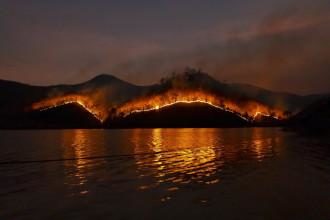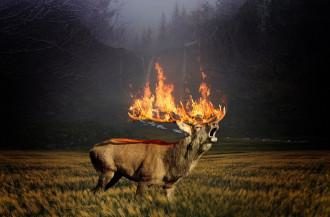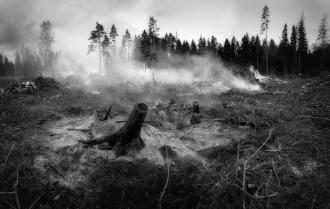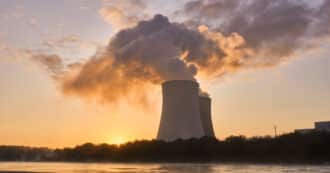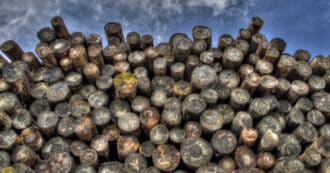By Sydney Cohen – Fire ecology is an extensive and complex topic. It involves many different aspects, from the chemical reactions that cause a flame to burn to the social impacts of large-scale wildfires.
In this blog post, we will discuss what fires do to the environment and how they interact with other aspects of the natural world. We will also talk about how different species react to fire and their survival strategies when faced with an inferno.
The Definition of Fire Ecology
Fire ecology refers to research that investigates interactions among ecosystems and the fires that occur in them naturally. Wildfires are generally recurring in diverse environments and may be necessary for plant development processes. Fire ecology also studies the effect of anthropogenic change and management on the incidence and effects of wildfires.
The History of Fire Ecology
Fire history is one of the least-studied aspects of ecology. However, it’s an important issue because fire history can have a significant impact on forest health, wildlife habitat, and carbon storage. The history of fire ecology has been shaped by three major forces: climate change, human activities, and natural phenomena.
Understanding Fire History
An important concept of fire ecology is fire history which determines how often fire occurs in a geographical area.
An annual tree adds a new layer of cells increasing the tree’s height. During fires and storms, forests can only become shattered. A layer of charcoal stays on the active tree and is covered by the layer of new growth. These fire scars provide a record that provide scientists with the ability to record when a fire occurred.
The Perception of Fire
Fires are a natural part of the Earth’s ecosystem. They have been happening since before humans were around and they will continue to happen long after we’re gone.
The perception of fire has changed dramatically in the last century. In the early 1900s, fires were seen as natural and necessary to maintain healthy ecosystems. But by 1973, when the National Fire Prevention and Control Administration was created, this idea shifted; people began to see fire as a destructive force that needed to be eliminated at all costs. And even though we now know more about how important it is for an ecosystem to have periodic fires, few people understand how fire ecology works or can easily identify trees that are likely to catch on fire.
The Causes of Fire
The cause of fires is often debated, but it has been found that lightning strikes are the most common way fires start.
The next most common causes of fires are intentional ignition by humans, followed by the spontaneous combustion of materials, like coal or wood, inside a building.
The Effects of Fire
The effects of fire on a landscape can be devastating. For example, high-intensity fires kill all vegetation and wildlife in their path.
However, fires kill many trees, which allows for new growth to take place. which is essential for a healthy forest ecosystem.
The Advantages of Fire for Ecology
Sometimes, fire affects ecosystems positively. The positive environmental fire effects include removing low-growing underbrush, cleaning the forest floor of debris, opening it up to sunlight, and nourishing the soil. This allows for species of plants and trees to grow healthier, even though there are fewer of them with these clearings of the forest floor.
There are also such things as prescribed burns, also known as a planned fire. Researchers create “a scientific prescription for each fire, prepared in advance, describes its objectives, fuels, size, the precise environmental conditions under which it will burn, and conditions under which it may be suppressed.”
The Disadvantages of Fire for Ecology
Despite the benefits of prescribed burns and controlled fires, they post many risks as well. The disadvantages to prescribed burns include “a risk of escape; its use can be restricted by weather; it is cause for public concern in areas sensitive to smoke; under certain conditions, it may reduce long-term soil fertility; and it can be very costly.”
Ultimately, fire needs fuel to continue, such as oxygen and combustible material, both of which are very prominent in forested areas.
The U.S. Forest Service Manages Fire Ecology
The U.S. Forest Service is the United State’s federal agency that manages all U.S. national forest and grassland, which covers 193 million acres of land in 44 states and Puerto Rico, including 922 federally recognized tribes and Alaska Native villages. Managing fire ecology is their number one priority due to the importance of fire in maintaining healthy forests in both urban and rural areas (USDA).
The U.S. Forest Service is one of the largest land management, protection, and conservation organizations in the U.S., with responsibilities that include fire suppression, forest health monitoring, and disease prevention, watershed management, recreation management, natural resources research, and development for timber production.
Fire in The Media
Unfortunately the global media portrays fires as negative, catastrophic disasters, never explaining the positive impact they have, and their necessity for ecological forest and woodland development!
California is constantly featured in the media because its ecosystems and forests are incredibly prone to wildland fire. The frequency, intensity, and severity of the burning of California’s vegetation, resulting from climate change and increasing, drier temperatures, has caused the depletion of many natural nutrients in soils, and the endangerment of many animals.
Fortunately, there are many restoration processes in place, such as the California Wildfire Restoration Project, which works to restore California’s historical vegetation by planting trees in burned areas.
Fire and Religion
William D. Nikolakis and Emma Roberts discuss in “Indigenous fire management: a conceptual model from literature” how “fire is perceived through the lens of culture, and is rooted in mythology and religion” (Nikolakis and Roberts). Different cultures have different understandings of fire ecology.
For example, Ancient Greek mythology and Indigenous cultures from the Pacific Northwest have stories of fire stolen from the gods and gifted to humanity. Western religions, on the other hand, “cast fire as being pagan, destructive, and even apocalyptic, shaping modern Western perspectives on fire, and fire management” (ibid)
Western religions can help us recognize the awesome power and danger of fire, while Indigenous wisdom and Indigenous fire management (IFM) can help ensure our ecosystems are healthy, balanced and safe through controlled burns.
The concern of wildfire is high in the United States. To help reduce this risk, we need to understand how fire has traditionally played an integral part in ecological science and ecosystem dynamics. We also need to think about what steps are needed for future research on managing wildland fires that will be necessary for restoration programs on federal land.
The role of fire in the ecology and management of wildland landscapes is complex. Fires are a natural part of ecosystem dynamics that can be used for restoration purposes, but they also have costs to humans and wildlife alike. Ecological science research and the study of fire ecology is vitally important to preserving our planet and has led us to understand not only how fires work, but what factors influence them so we can better manage the environment.
* Featured image source


